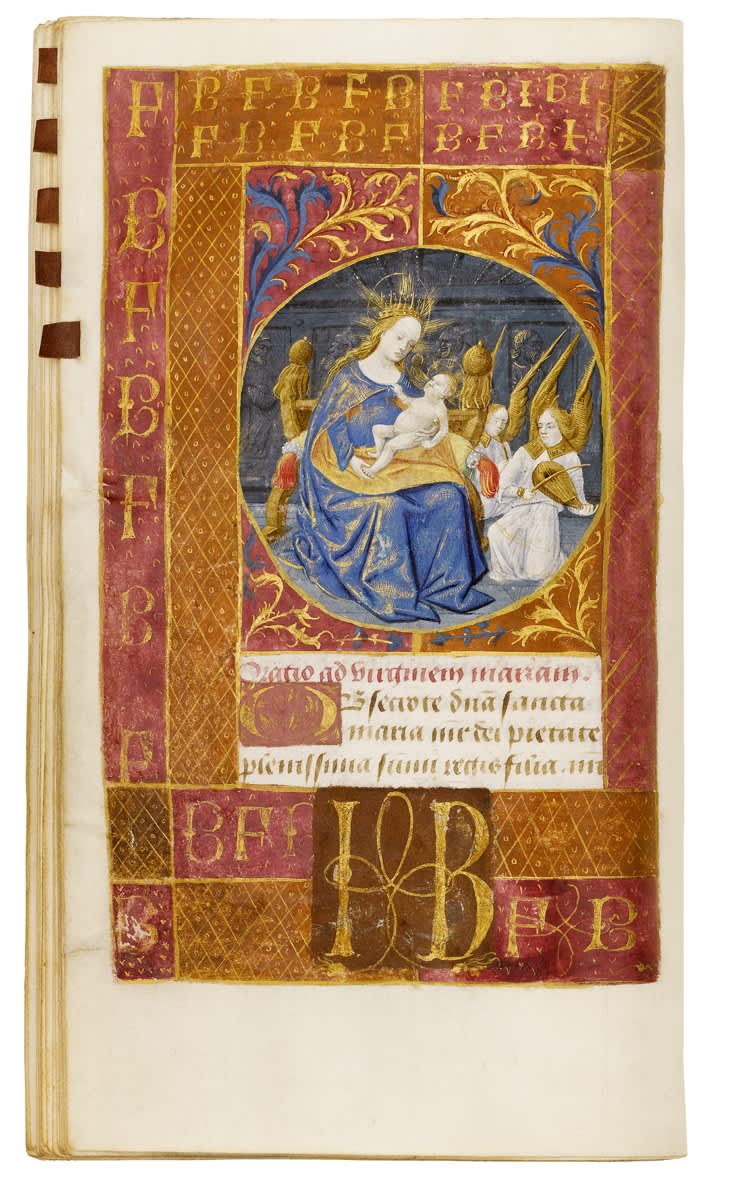

Book of Hours, use of Rome, made for Johannes de Bartha or Jean de Labarde. Manuscript on vellum, in Latin, French and Occitan, illuminated after the style of Jean Bourdichon and Jean Poyer and an older Master from the circle of Jean Perréal. France, Tours, c. 1475-1500


Book of Hours, use of Rome, made for Johannes de Bartha or Jean de Labarde. Manuscript on vellum, in Latin, French and Occitan, illuminated after the style of Jean Bourdichon and Jean Poyer and an older Master from the circle of Jean Perréal. France, Tours, c. 1475-1500
Hide caption

Book of Hours, use of Rome, made for Johannes de Bartha or Jean de Labarde. Manuscript on vellum, in Latin, French and Occitan, illuminated after the style of Jean Bourdichon and Jean Poyer and an older Master from the circle of Jean Perréal. France, Tours, c. 1475-1500
Hide caption

Book of Hours, use of Rome, made for Johannes de Bartha or Jean de Labarde. Manuscript on vellum, in Latin, French and Occitan, illuminated after the style of Jean Bourdichon and Jean Poyer and an older Master from the circle of Jean Perréal. France, Tours, c. 1475-1500
Hide caption

Book of Hours, use of Rome, made for Johannes de Bartha or Jean de Labarde. Manuscript on vellum, in Latin, French and Occitan, illuminated after the style of Jean Bourdichon and Jean Poyer and an older Master from the circle of Jean Perréal. France, Tours, c. 1475-1500
Hide caption

Book of Hours, use of Rome, made for Johannes de Bartha or Jean de Labarde. Manuscript on vellum, in Latin, French and Occitan, illuminated after the style of Jean Bourdichon and Jean Poyer and an older Master from the circle of Jean Perréal. France, Tours, c. 1475-1500
Hide caption

Book of Hours, use of Rome, made for Johannes de Bartha or Jean de Labarde. Manuscript on vellum, in Latin, French and Occitan, illuminated after the style of Jean Bourdichon and Jean Poyer and an older Master from the circle of Jean Perréal. France, Tours, c. 1475-1500
Hide caption
Made in Tours, the manuscript was, somewhat later, adapted to the needs of Jean de Labarde, whose name is explicitly added in one of the final texts. Jean de Labarthe (or Labarde) was married to Brunette d’Isalguier, daughter of the seigneur of Clermont. The initials IB, entangled in a love-knot, were added below several miniatures. The year of their marriage is unknown, but it is known that Jean took over his father’s charges in Guizerix (Pyrenees) in 1498. The initials IB are found in combination with FB / BF. Both the De Labarde and the Isalguier families played important roles in Gascony and in the Toulouse region since the 14th century. The letters F B, B F could refer to Foix and Bearn, where they had their roots and many properties.
The manuscript contains seventeen fascinating, decorated pages. All have a painted rectangle décor, in purple and brown, highlighted with gold. Whereas two miniatures have arch-topped fields, fifteen are placed into roundels, the spandrels around those tondos are either filled with ornament, in some cases with fine camaïeu d’or paintings of busts, symbols etc. Book decoration in medallions had been established by the famous illuminators Jean Bourdichon and Jean Poyer, active in Tours in the second half of the 15th century. The gifted illuminators of the present manuscript were familiar with these masters' style and technique. Three miniatures may be by a different hand working in the same orbit. Not only the illumination, also the book’s particular elongated, tall format implies that the manuscript’s origin can be traced back to Tours.
In the final quire of the codex, the name of the owner ‘Jean de Labarde’ is inserted, while some rare prayers in medieval French and Occitan were added to complete the manuscript. These may refer to local traditions venerating relics, such as the chalice of the Last Supper, a chip of the Holy Cross, and the rock of Christ’s Tomb. Saying these prayers, seeing the relics, or using pieces of vellum with prayers as an amulet or talisman would protect the owner of the book against a sudden and unprepared death: ‘escrire ces noms en parchemins et les faire lier sus son ventre’. In the description of the holy chalice, old French is mixed with Latin (f. 125v). All this is most interesting, as the legends on the Holy Chalice are widely associated with the region of Southern France and the Pyrenees. This Book of Hour ends with a prayer in Occitan – which was presumably Jean’s mother tongue.
Read more about this manuscript in our Christmas Spotlight, in our Spotlight on Southern France and Spain, in our Spotlight on Tours, and in our Spotlight on David.



